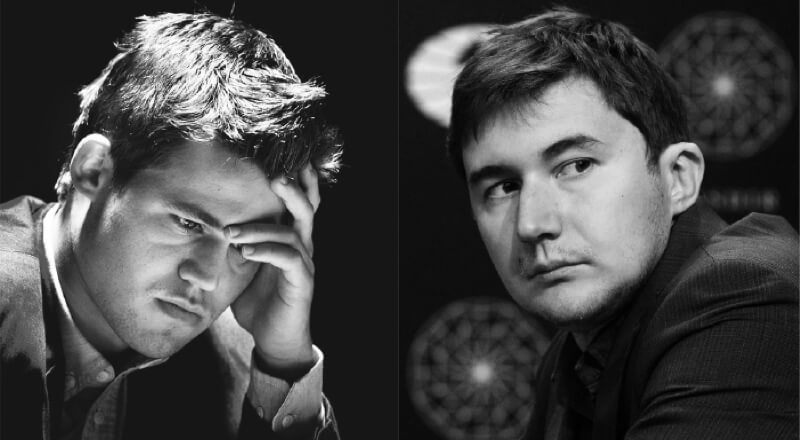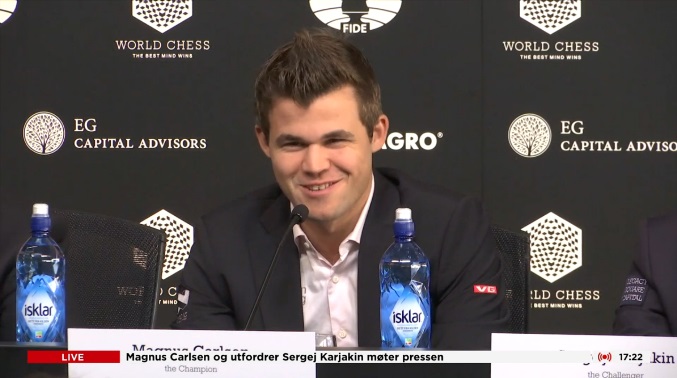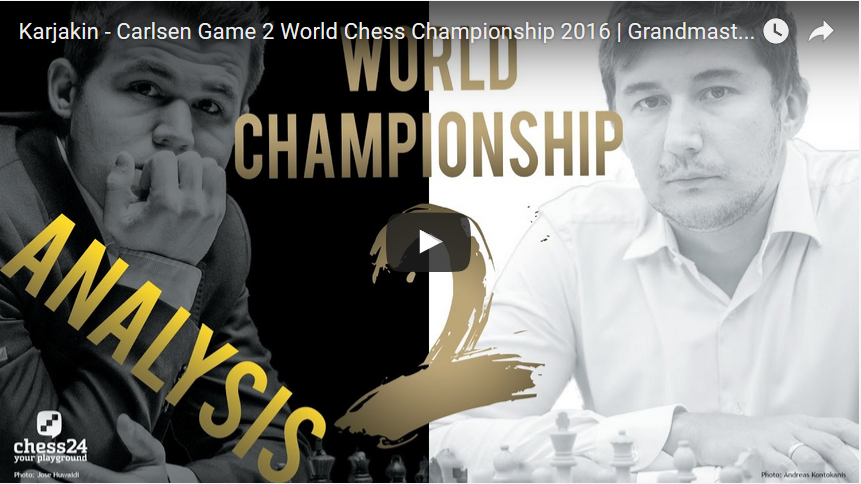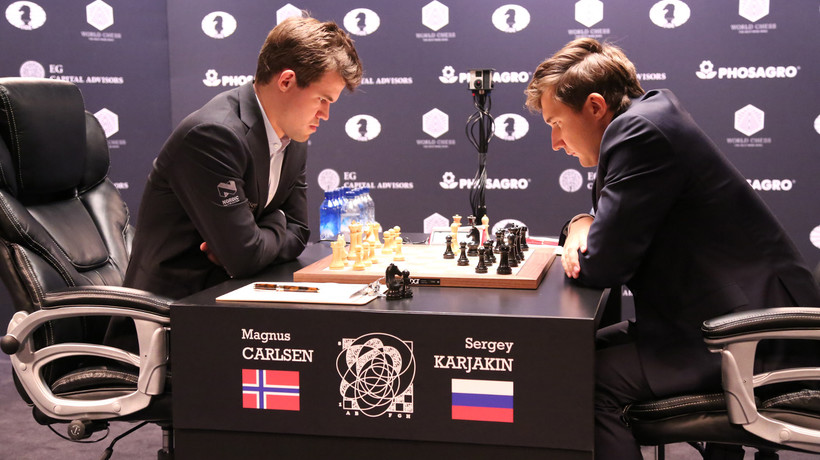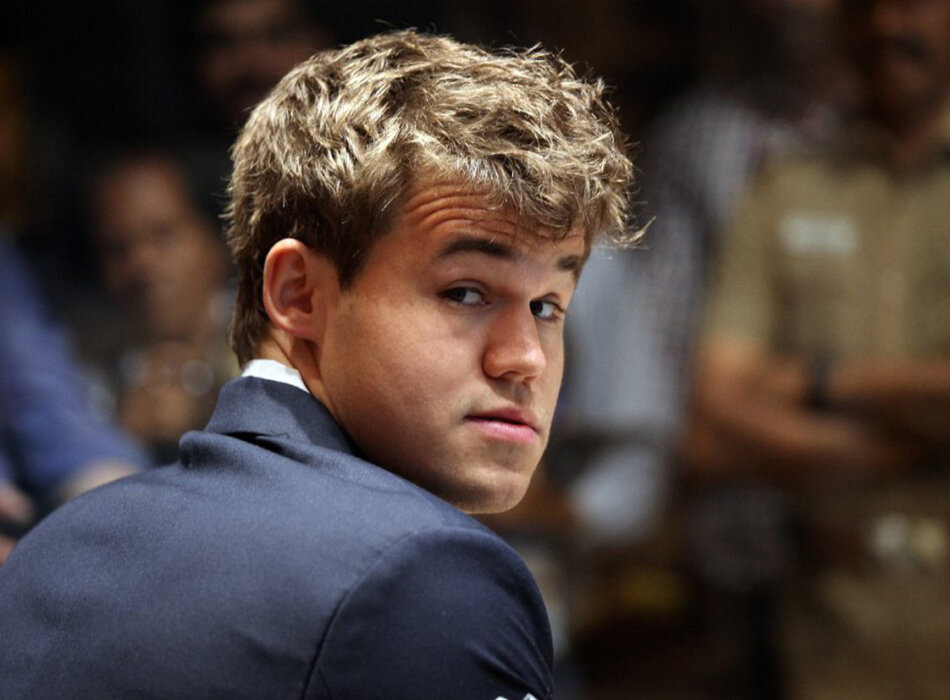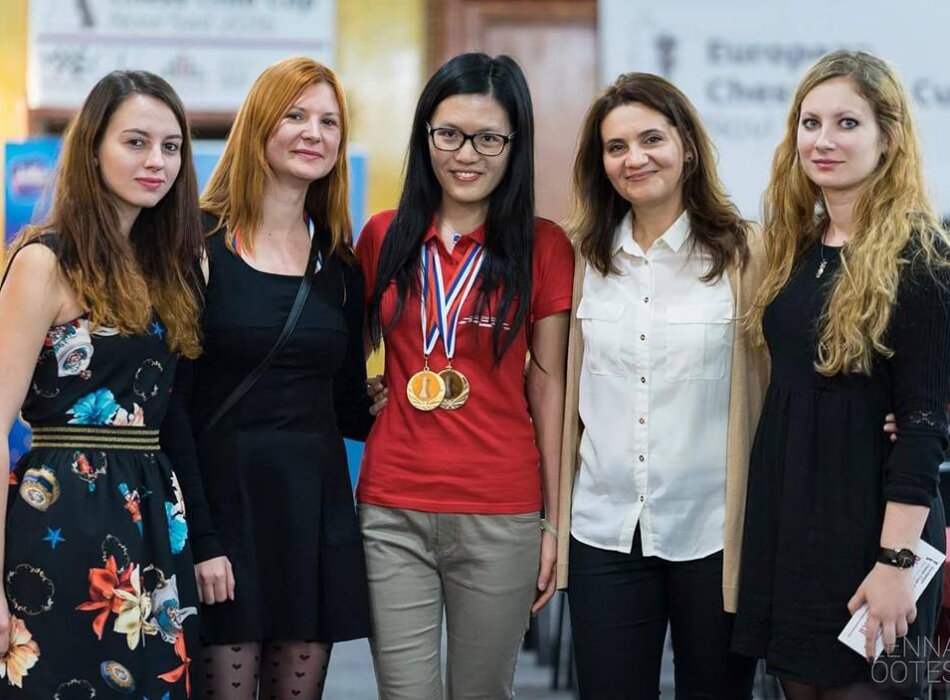Game 4: Draw – “I really believe it’s better to be attacking than defending”
Sergey Karjakin defied the odds to survive another 6.5 hours and 94 moves of torture at the hands of Magnus Carlsen, constructing a saving fortress just when it seemed the World Champion would finally take the lead in the match. It was a “mystifying” day, to use Peter Svidler’s word, as first Sergey and then Magnus committed a single glaring error each that transformed the course of the encounte.
When Sergey was asked how he was feeling after once more coming back from the dead he answered simply “fantastic!”, while Magnus, who was clearly feeling very far from fantastic, still found a positive to accentuate: “I really believe it’s better to be attacking than defending”.
So going into the second rest day Sergey Karjakin has increased his rating by four points by holding the World Champion and world no. 1 to four draws. Only eight games now remain before we head to tiebreaks.
source





